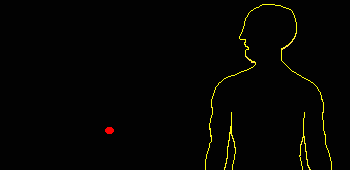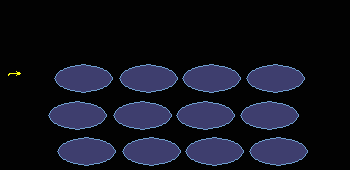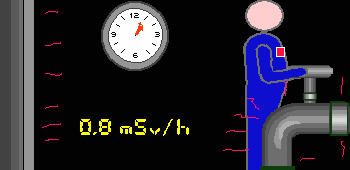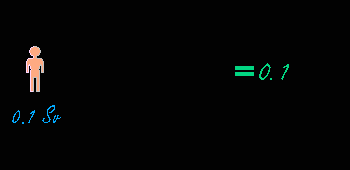Various Units of Dose - Animations

 |
The biological effect of an exposure on an organ depends on the type of radiative energy absorbed (gamma, beta, alpha, pion, etc) by the organ of interest and the harmfulness, ie., the time and intensity of the type of radiation delivered. Absorbed dose is used to measure the energy delivered to the tissue (the unit used is the gray: Gy). Equivalent dose is used to quantify the biological damage to the organ (the unit used is the sievert: Sv).  Absorbed dose: The absorbed dose, measured in gray (Gy), represents the energy transmitted by radiation to living tissue.
One gray corresponds to the energy of 1 joule (J) transmitted to 1 kilogram (kg) per meter squared per second of living tissue (1 J - (1 kg*m²)/s²). It is otherwise known as a Newton*meter (1 J = 1 N*m).  Equivalent dose: For a given organ, the equivalent dose H (in Sv) is equal to the absorbed dose D (in Gy) multiplied by the radiation weighting factor WR (or, commonly known as the Quality Factor, Q). WR expresses the harmfulness of the radiation, which depends on the density of the ionization produced along the particle's trajectory. Alpha particles (ionized helium) have a quality factor of 20 relative to gamma and beta emitters which have a Q = 1.
To measure the risk of biological damage, regardless of the type of radiation (alpha, beta, gamma or neutron) or exposure (internal or external, partial or total) involved, the effective dose, often called 'dose' and expressed in Sieverts, Sv, is used. It is an overall indicator enabling all types of exposure to be measured on the same scale.  Effective dose: The effective dose E (in sieverts), often erroneously called 'whole body dose' or simply 'dose', is equal to the absorbed dose D (in Gray) multiplied by the radiation weighting factor WR (or Q) and the tissue weighting factor WT (assigned on risk of damage, ie bone marrow >> neurons; tissues with high replication rates >> low replication tissues). The risk of damage is otherwise called the radiosensitivity of a tissue/organ.  Orders of magnitude: The sievert is a relatively 'large' unit and there is a wide range of exposure levels. Consequently a submultiple, the millisievert, is often used (1 mSv = 0.001 Sv).  Individual dose: Individual exposure occurs only while the body is actually being subjected to radiation. The total individual dose received is the product of the dose rate (dose delivered per unit of time) multiplied by the exposure time. “High” dose rates (for this exercise ~>0.1 Gy/min) are generally more often damaging that low dose rates (<0.1 Gy/min) due to opportunity for either inherent cellular “repair” mechanisms or capture of reactive oxygen/nitrogen (ROS/RNS) species which are generated by absorbance of the radiative energies.  Collective dose: The collective dose, expressed in man-sieverts, gives a measure of the extent to which a group of people or a population has been exposed. It is equal to the sum of the individual doses. Adapted from Dosimetry, Measuring radiological risks (Radior, IAEA, European Commission, CEPN) |

